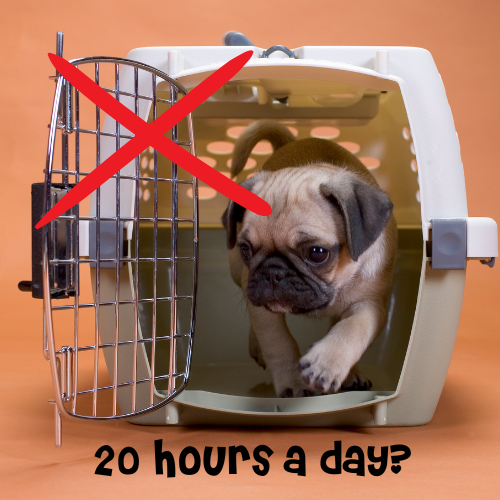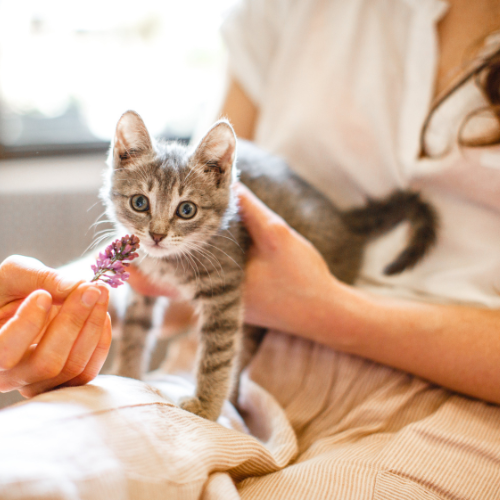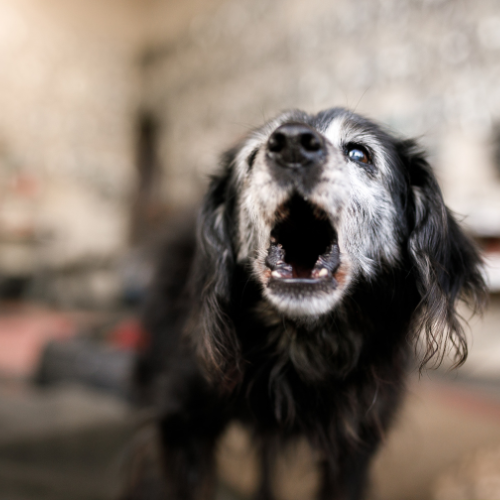Crate training may aid with potty training and provide your dog a safe space to call their own. However, if you’ve never trained a dog to use a crate before, you might be curious about the most effective approach to go about doing so. How long may a dog be crated? This is a statement you need to be thinking about yourself very frequently if you recently got a new puppy.
The crate allows the dog to relax, but crating it for too long can be harmful and leads to destruction. Generally, a dog is advised to be left alone for four hours during the day and eight hours at night 20. Now, putting it in the crate for longer than this period is not only unkind, but it will also disrupt its potty training as young pups cannot regulate their bladder and bowel movements for hours at a time. A dog should not be left in a crate 20 hours a day.

The Benefits of a Crate
Your dog may feel more at ease, safe, and comfortable while confined in a crate. It is quite unusual for canines to damage their sleeping place by their very nature. For this, crates aid in potty-training your pup. A cage will help you avoid accidents if your dog isn’t house-trained well.
Crates are very helpful for energetic dogs since they provide a simple method to settle them down. Crates are also an excellent investment. When placed in a crate, most dogs will immediately become calmer, and as a result, they will be much more open to the training you provide for them. There are many benefits of crate training.
Dried Dead Tick On Dog – What Should You Do?
For How Much Time You Crate a Puppy?
As you become more familiar with your puppy, you will better know how long you can keep it in its crate. This is dependent on several different things.
- Age: How old is your little doggie? Use your puppy’s age as a general reference. Crate time for a puppy of five months’ age, for instance, should not exceed 3 to 5 hours. A 3-4 month-old puppy might last between three and five hours.
- Time spent away: All dogs, including adults, must never be crated for no more than 9 hours. A puppy may develop separation anxiety or have accidents within the crate if it is confined for an excessive time during the day. The likelihood of experiencing stress, anxiety, and other adverse health effects, such as UTIs, rises due to this. It would be difficult for you to teach your dog in the future if the puppy acquires the habit of defecating or urinating within the crate.
- Temperament: Some dogs dislike being alone for extended periods and may require additional care. Depending on your dog’s temperament, these sad cries may last hours or minutes.
- Medical history: Certain medical issues may cause your pup to defecate more regularly. In this situation, hiring a dog walker or making other arrangements is recommended to ensure your dog is never left alone for an extended period. Your dog may have a condition that makes holding it difficult.
- Breed: Every breed has its own set of distinctive characteristics and specific requirements. Smaller dog breeds, for instance, have smaller bladders, which means that they could require longer breaks between periods spent in their crates.
Crate Time for Adult Dogs
The majority of adult dogs can remain in a crate for around half a day if they receive sufficient exercise and walk when they are not confined. Adult dogs can handle eight hours in a crate while their guardians are at work, but longer can cause behavioral issues. If you work long days, try hiring a dog walker to let your pup out of its crate and walk it, or consider doggie daycare.

Crate Time for Puppies
Puppies have a harder problem retaining their bladders than adult dogs, so crate them less often. Opinions vary on the precise period, but it is suggested puppies under six months old shouldn’t be crated for more than three to four hours.
In the end, you must get to understand your puppy, observe their behavior, and determine their own limit.
Crating an Eight-Month Puppy
One rule for determining a puppy’s crate time is to add an hour to its age in months. So, if a puppy is 8 months old, adding an hour implies 3 hours a day is enough crate time. However, we do not advise keeping the puppy alone for more than two hours at a time. You may begin crate training your dog at a minimum age of eight months.
Problems With Over-Crating
Follow guidelines and your vet’s suggestions on crate time. Excessive confinement can result in a wide range of behavioral and physiological issues. Puppies need mental and physical stimulation, which crates don’t provide.
Understimulation, boredom, and pent-up energy result in destructive behavior issues. In addition to contributing to obesity, a lack of physical exercise is a factor in the underdevelopment of pups and several other health issues.

A dog that spends excessive time in its crate may not get the opportunity to interact with people and other canine companions. Puppies with insufficient socialization are typically not very loving with their humans.
They have a poor response to training, become quickly stressed and unable to cope effectively with it, interact improperly with people and other animals, and have various other behavioral issues. It is challenging to compensate for lack of proper socializing when a dog is younger.
Why Does My Dog Sleep With His Tongue Out? [Complete Guide]
Crate Training Tips
To optimize the efficiency of your dog’s crate, set it in an area that your dog enjoys. Put snacks in the crate or give your canine companion a bone or chew toy. If you want them to acclimate to the crate faster, leave the door open when you first start using it. After that, begin the process of gently shutting the door. Make sure the crate is warm and the proper size for your dog. In the crate, a dog should be able to stand, sit, lie, and turn around.
Importantly, never use the box as a form of punishment. If you choose to discipline your dog by placing them in their crate, you risk instilling fear in your dog towards the crate itself.

Doctor of Veterinary Medicine (D.V.M.) at Nation Taiwan University,Master of Science (M.S.) in Biomedical Engineering at National Taiwan University of Science and Technology




